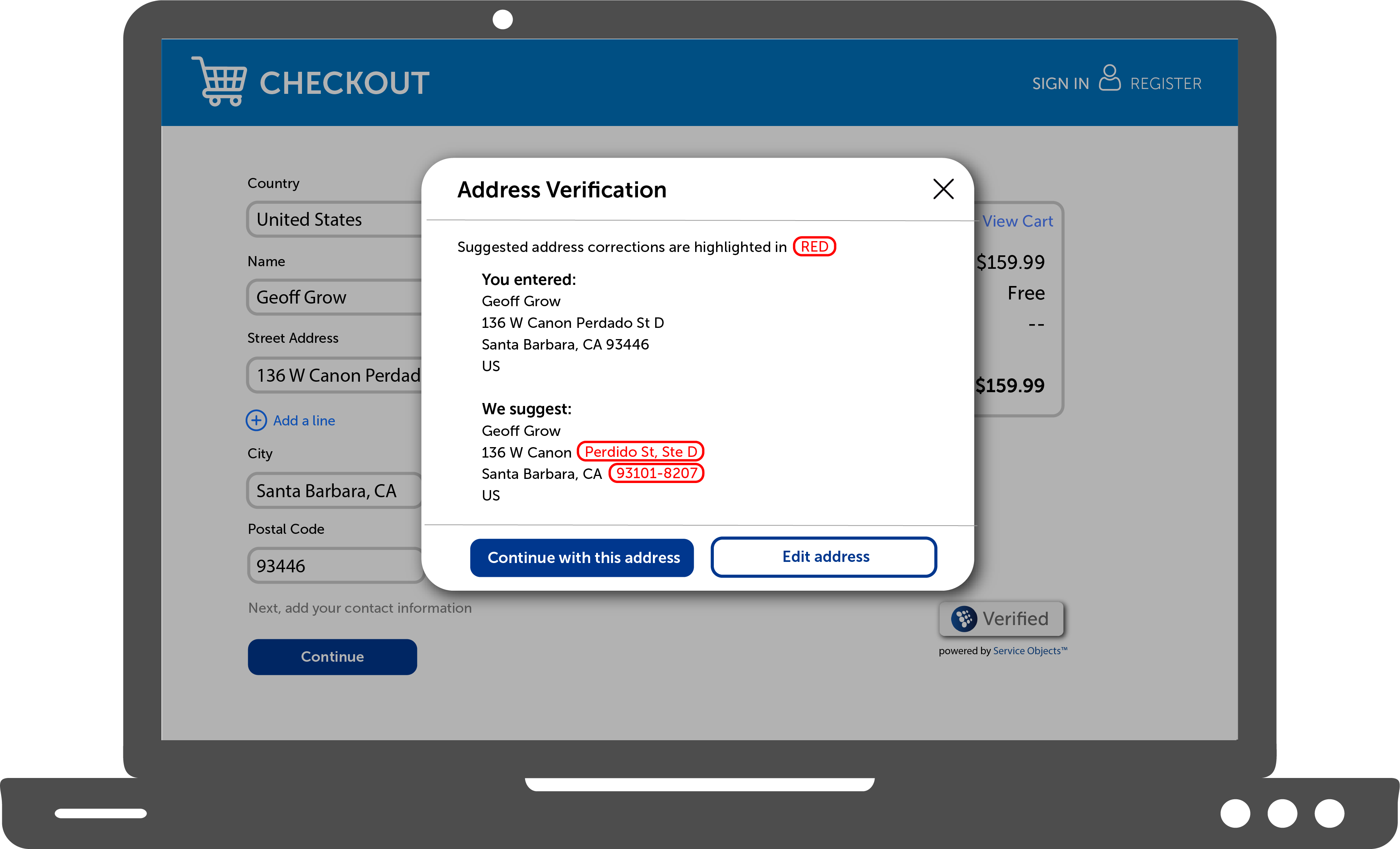Why correct addresses matter
What could be simpler than someone typing in their own address? Well, as it turns out, many things. Simple data entry errors are common when entrusting customers to type them in and become costly when related to shipping and billing addresses.
Common errors include typos, misspelling, omitting crucial information such as apartment or suite numbers, addresses that do not meet postal service standards or even “friendly fire” errors where an absolutely correct address is entered in the wrong fields for a carrier – for example, putting your entire address, city, state and ZIP code in a street address field. (If you’re being honest, you’ve probably even done this yourself once or twice.) And the same issues apply for in-house data entry as well.
Unfortunately, address errors can really cost you and your business nowadays. Here are just a few of the real consequences of bad address data:
- Increasingly stiff address correction fees being charged by carriers for figuring out incomplete addresses or missing unit numbers.
- Losing out on substantial postal discounts for mail sorting. For example, our DOTS Address Validation service can return information for bundling mail to obtain USPS Carrier Route discount rates.
- False-negative credit card declines due to mismatches when addresses don’t meet AVS formats for credit card authentication.
- Cart abandonment due to address rejection and poor user experience.
Perhaps worst of all – particularly during one of the busiest holiday shopping periods in history – address errors can lead to returned packages, re-shipping fees, lost inventory, and lasting damage to your brand and your customer relationships. Given the cost of acquiring a new customer versus retaining an existing one, service failures are often the biggest hazard of all from faulty contact data.
Recommend a Validated Address
Thankfully, there is a simple solution that virtually eliminates the risk of bad contact addresses: validating address input at the time of data entry. Best of all, you can build this capability right into most ecommerce and business automation platforms for a seamless user experience.
You’ve probably seen this “We suggest” functionality in your own online shopping experience – you enter your address data, the software validates and corrects it, and then suggests a corrected address for you to approve (which, normally, you will).
Here’s an example using our own CEO Geoff Grow and our new business address at Service Objects. You can see that the validation process takes the entered address – which has an unlabeled suite number and a standard five-digit ZIP code – and suggests a corrected address with a correctly labeled suite and a full ZIP+4 code.

How to implement an Address Validation Service
This capability involves implementing one of our address validation products in the business logic of your ecommerce, CRM or business automation platform, using an API interface. It does involve programming and some business logic on your end, which is pretty straightforward for most developers – and we’re here to help guide you through the process if you run into any issues. Here are the three overall steps involved:
Step 1. Decide which real-time address validation API meets your needs, such as Service Objects’:
- Address Validation – US
- Address Validation – Canada
- Address Validation – International (includes USA and Canada)
This decision will largely be based on what countries you ship product or transact business in.
Step 2. Determine the business logic and design that you will use to optimize user experience with the “We Suggest” address functionality. We make this easy for you by offering sample code and plugins for our services for most major ecommerce platforms.
We recommend doing this in a way that is sensitive to the risk of cart abandonment, by including the ability to skip or edit the address (so the user isn’t stuck in a loop of continually being asked to update the address). It is also important to highlight what corrections are being made to this address, to help the user identify why this new address is being suggested and make them comfortable with accepting the edits.
Step 3. Integrate the API with your platform, so you can start presenting customers with address suggestions and corrections. And congratulate yourself on seamlessly removing a major source of costs and errors from your contact data.
Want more information about how to implement this functionality? Contact our friendly product experts for a no-obligation consultation. And here’s to a smoother and more profitable shopping experience.













